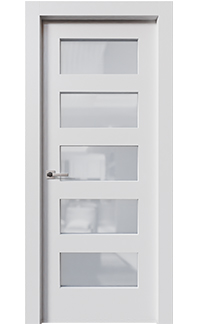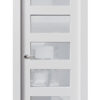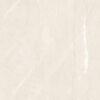Description
THE DOOR NAME ORIGIN – “SHAKER STYLE 5 EQ LIGHT LAMI GLASS”
This interior door model is designed to resemble a French door without the attendant French door qualities that some folks might deem undesirable, which is in keeping with the Shaker principles.
The Shaker movement, which emphasized simplicity, utility, and honesty in all products, may resemble the minimalist approach, but, unlike minimalists, their cabinet makers (as well as interior door makers) fully understood and appreciated elegance.
Our ability to create interior designs that are meaningful and have character depends entirely on our ability to define space: to apply syntax, terminology, rhythms and patterns of architecture in order to inform us who we are. The purpose of interior design is two-fold: to organize your dwelling or working space where you would feel entirely comfortable; as well as to be a manifestation of your personal taste – to be appreciated by those you invite over for dinner or a business meeting.
Our interior design informs us not only where we are geographically (northern decors differ sharply from their southern counterparts), but also who we are culturally, where we come from and where we’re going.
Historically, confidence has been a major factor in selecting – or creating – the right type of decor for one’s residential or commercial quarters. Some Roman emperors were content with modest living arrangements; others had palaces built for themselves, the most notorious of which would be – well, you know. Domus Area was a vast landscaped palace fitted with marble, jewels, and ivory. One could only imagine what the interior doors in that place looked like. When the emperor entered it for the first time and looked around, he uttered these words: “Finally, I can live like a human being.”
Whereas Emperor Aurelian, who in the five years of his rule restored the Empire to its former glory, effectively ending the Crisis of the Third Century and built a new wall around Rome, had no use for personal luxury.
Louis XIV, the Sun-King, found the Louvre (and the Palais-Royal across the street) unsuitable and was not satisfied with his living arrangements until the Versailles Palace whose construction he supervised personally was completed (next time you visit the place, check out those interior doors!) His ancestor, Louis IX, ruled the Kingdom while sitting under his favorite oak in Vincennes and went to sleep every night in a nearby hunting lodge. Was he more confident in his power than his descendant?
Anyway … Whatever your idea of a perfect decor may be (unless it’s thoroughly and unquestionably Baroque, in which case you might want to explore some of our other interior door collections), this interior door model will blend seamlessly into it thanks to its simplicity and quiet elegance.
Like all other Almes products, this interior door comes with state-of-the-art hardware, including the Italian made 3D-adjustable concealed hinges (making the installation a walk in the park, augmenting the overall elegance of the design, and ensuring that your door will never creak); the soundless magnetic lock (once you’ve tried it, you’ll never go back to the traditional type); and the automatic sweep, ensuring privacy and taking the sound-proofing and thermal insulation qualities to the next level.
FINISH: PRIMED
The advantages of this approach – of this type of interior door finish – are fairly obvious. Pick a color, any color that suits your projects best. Mix and apply. Re- coat whenever you feel it is necessary to do so. Touch it up. It gives you, the proud owner of these interior doors, complete freedom of choice, and the significant savings, especially where it comes to bulk orders, can be a true source of joy.
As Kurt Vonnegut mentions in one of his novels (Bluebeard, unless I’m mistaken … check it out when you get a chance), the thrill of laying on colors is a large part of the artist’s professional satisfaction. In other words, a keen pleasure.
When back in the remote past visual arts became a field dominated by professionals rather than hobbyists, the main problem of “just laying on paint” became obvious: you can’t.
The medium of choice back then was egg tempera, a permanent, fast-drying substance consisting of colored pigments mixed with a water-soluble binder medium, usually glutinous material such as egg yolk. Portraits and ornaments were executed in this medium, and the wood panel was the surface of choice. One of tempera’s interesting features is that it is not as easily absorbed by wood as other mediums. Some sort of primer was necessary, of course, but pretty much any substance that dried evenly could be used.
The drawbacks of tempera, or pintura al temple, as the Spanish call it, only became obvious with the advent of the Renaissance, when the leading representatives of the trade turned to oil (and interior doors suddenly became a great deal less crude, but that’s a story for another day).
Oil painting is the process of “painting with pigments with a medium of drying oil as the binder.” Commonly used types include linseed (highly preferable in art, though not necessarily in interior doors, mind you), poppy seed, walnut, and safflower.
Today, five hundred years later, it is safe to say that oil is more versatile than pintura al temple – by orders of magnitude. Specifically, the contrasts achieved through the former are much greater, the darks are far deeper, and three- dimensional, highly realistic images are much easier to achieve. Next time you visit a museum, take a closer look at pintura al temple portraits. All of them, without exception, come off as a bit “flat” as opposed to their latter-day counterparts.
Also, where glazing is concerned …
Glazing: a painting technique in which a transparent layer, with just a touch of pigment, is laid over a previously painted surface, allowing light to travel through the glaze and be reflected back off of the opaque layer below. Gentle shadows, subtle changes of color, smooth transitions – all these can be achieved through glazing, which was used by all artists up until the middle of the Nineteenth Century, when artist tubes were invented, revolutionizing the field, and other techniques began to be explored.
Tempera enthusiasts (it takes all kinds to make a world) will assure you that glazing is not just possible in pintura al temple but is actually the basis of the whole enterprise. Well, what are you going to do? They’re enthusiasts.
Anyway, la peinture à l’huile, as the French call it, re-introduced the ancient problem of most surface’s propensity to absorb dipingere, as the Italians call the stuff. Wood or canvas, it is all the same: you’re not going to get very far without a good primer.
Experiments were conducted, and soon rabbit skin glue emerged as the least expensive and most effective solution. It was easy to apply. It dried evenly. It made the application of the l’huile stuff on top of it a walk in the park.
There were drawbacks. Today, rabbit skin glue is considered to be a major cause of cracking by most modern conservators. (Remember, when you visited the Metropolitan Museum of Art – and did you see those interior doors? … some of them are quite something … – most “old masters” pictures are completely covered with a cobweb of cracks? There you go). Because the glue is hygroscopic, it continually absorbs moisture from the atmosphere, causing the glue to swell and shrink as ambient humidity levels change. Over many humidity cycles, this repeated flexing causes the brittle oily layers to crack.
To combat this problem, modern primers are made of acrylic materials which are guaranteed not to cause any damage to the dipingere. No bubbling, no cracks. Your interior doors are safe.










